 | ||
Rivethead sexy back
A rivethead or rivet head is a person associated with the industrial dance music scene. Unlike the original industrial movement (the members of which are sometimes referred to as "industrialists"), the rivethead scene had coherent youth culture with a discernible fashion style. The scene and its dress code emerged in the late 1980s on the basis of electro-industrial, EBM and industrial rock music. The associated dress style is militaristic with hints of punk aesthetics and fetish wear.
Contents
- Rivethead sexy back
- Rivethead difference
- Origins of the term
- Aesthetics
- Men
- Women
- Comparison with goth subculture
- References
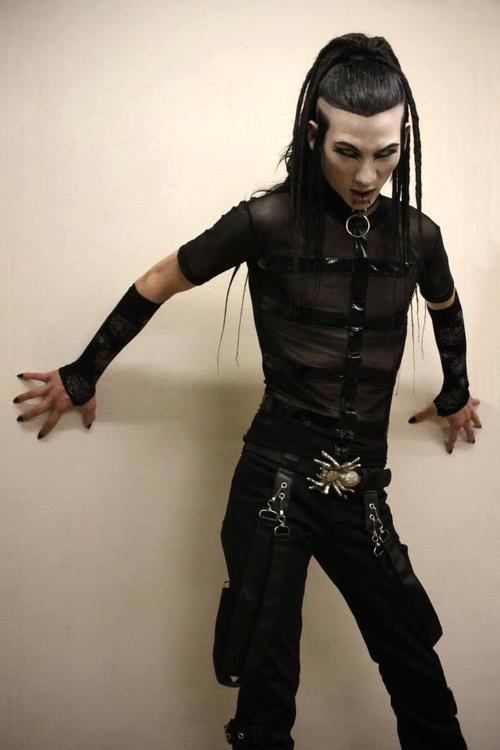
Rivethead difference
Origins of the term
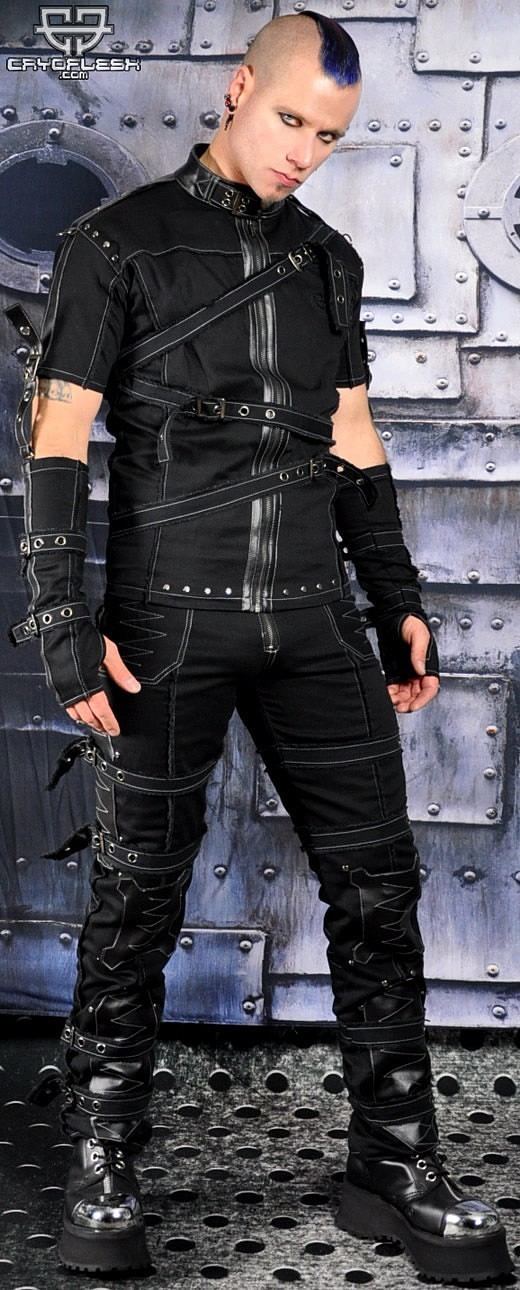
Initially, the term rivethead had been used since the 1940s as a nickname for North American automotive assembly line and steel construction workers and hit the mainstream through the publication of Ben Hamper's Rivethead: Tales From the Assembly Line, which is otherwise unrelated to the subculture.
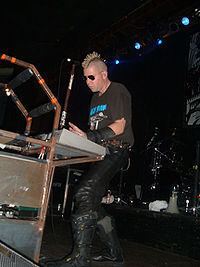
Glenn Chase, founder of San Diego music label Re-Constriction Records, is responsible for the term's meaning in the 1990s. In 1993, he released Rivet Head Culture, a compilation that contains several electro-industrial and industrial rock acts from the North American underground music scene. In the same year, industrial rock group Chemlab—whose members were close friends of Chase—released their debut album, Burn Out at the Hydrogen Bar, which had a track called Rivet Head. Chemlab singer Jared Louche said he did not remember where the term came from, although he states that this song title was in his mind for years.
Aesthetics

The rivethead fashion style draws inspiration from military aesthetics, alongside elements that emulate the industrial ambiance of major urban centers. It incorporates aspects of punk fashion, including fanned and/or dyed Mohawk hairstyles, and integrates fetish attire, such as tops, pants, and shorts made of black leather or PVC. Furthermore, it features modern primitive body modifications, including tattoos, piercings, and scarification.
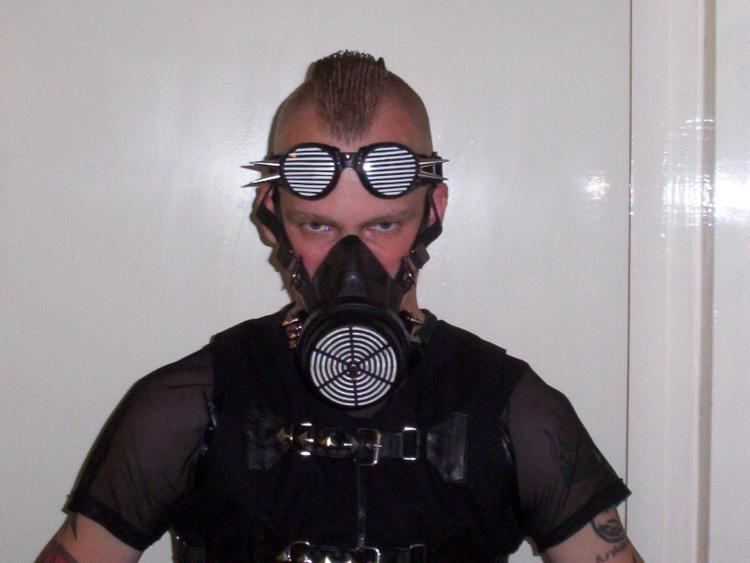
Some parts of the rivethead scene emphasize a post-apocalyptic, dystopian influence, often inspired by movies, e.g. Mad Max (1979), Escape from New York (1981), Gunhed (1989), Death Machine (1994) or Strange Days (1995). Several movies, such as Hardware (1990), Strange Days and Johnny Mnemonic (1995), contain songs by Ministry, KMFDM, Diatribe, Stabbing Westward and other bands who are associated with the rivethead culture. Other influences include sci-fi archetypes, such as Lupus Yonderboy of the Panther Moderns and Razorgirl from the cyberpunk literature (characters from the Sprawl trilogy by William Gibson).
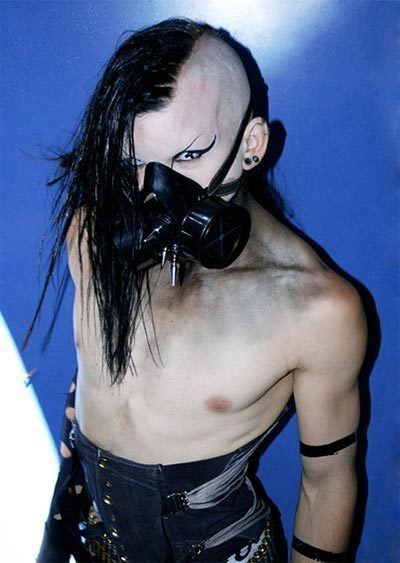
Below are some of the main characteristics of the rivethead dress style. As a divergence from the New Romantic, goth, steampunk and similarly extravagant youth cultures, the idea is to make a statement with as few dress components as possible. The rivethead look commonly is unadorned and epitomizes a direct reflection of the social environment ("street survival wear").
Men

Women

Rivetgirls may dress along with the femme fatale look: sexuality as power. Common are fetish wear, such as black PVC or leather corsets and miniskirts, ankle-deep or knee-high stiletto heel boots; less makeup than Goths or 1980s New Wave fashion girls, who were also an influence on the late-1980s/early 1990s rivetgirl style (cf. fishnet tights, stilettos, Dr. Martens low boots). Often dyed hair (black, sometimes red or blonde) that is long, short, spiked, partially shaved (see also Maria Azevedo of Battery or Yone Dudas of Decoded Feedback) or dreadlocked (see Anna Christine of Luxt). On the other hand, the female rivethead fashion look may be and often is identical to the tough style of the male rivetheads (Tank Girl image; military wear such as tank tops, paratrooper pants and combat boots). Kim X, co-founder of California-based music label COP International, compared the female rivethead attitude to the Riot grrrl movement.
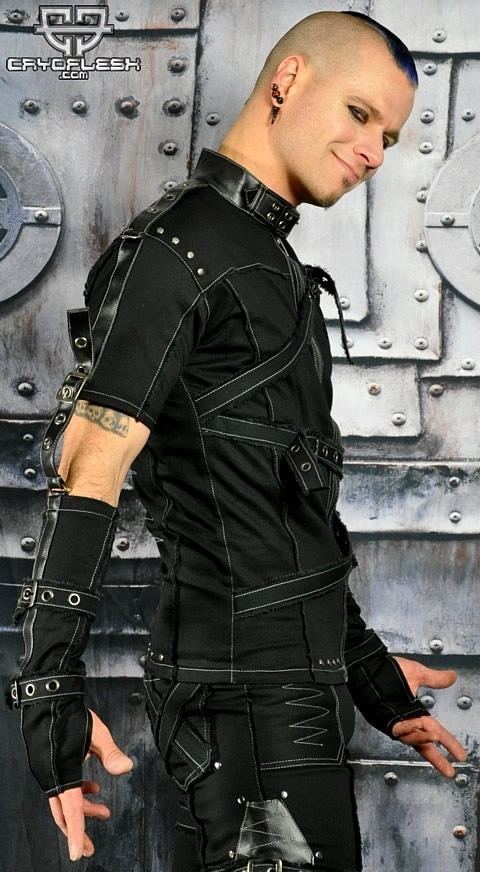
“Women involved in the 'Industrial scene' wore less makeup, particularly less elaborate eye makeup. They also adopted a much more traditional Punk look, with shorter skirts, made of leather or vinyl, and combat boots. Because of the athletics required of 'Industrial' dancing, it was rare to see women in this scene with spike heels, as it would constrain their movement on the dance floor. The male 'Industrial style' also was much closer to Punk, with men wearing shorts, big boots and adopting partially shaved hairstyles.”
– Kristen Schilt, sociologist at the University of Chicago
Comparison with goth subculture
The original rivethead subculture (late-1980s to mid-1990s) was different from the goth subculture in ideological and musical terms, as well as in their visual aesthetics. Confusion regarding the boundaries of those two youth cultures has heightened because of the late-1990s "multi-youth-cultural" cross-hybridization, which has led people to incorrectly believe that rivetheads are an offshoot of the goth subculture or identical to trends such as the rave fashion- and trance music-inspired cybergoth movement. Canadian novelist and author Nancy Kilpatrick labelled this blend "industrial goth", as does Julia Borden. Note: In the heyday of the rivethead culture, the term "industrial goth" as a description of a youth culture did not exist).
“The 'Industrial look' began to emerge in the late 1980s. […] The typical 'Industrial' guy, circa 1989, was a Punk who liked technology.”
– Julia Borden
“In contrast to the old-style Goth look, which was androgynous, the male 'Industrial look' was tough and military, with a sci-fi edge. The men wore […] band T-shirts, black trousers or military cargo pants in black, military accessories, such as dog-tags, heavy boots […] 'Industrial' women, who were fewer in number, tended to wear waist-cinching corsets, small tank tops or 'wife-beaters' [sleeveless t-shirts], trousers, and sometimes suspenders hanging down off the pants. They also […] sometimes shaved their heads.”
– Valerie Steele, fashion historian and director of MFIT, New York.
“Stylistically, both men and women in the Gothic subculture […] rely heavily on feminine signifiers, such as makeup, skirts and corsets, while the 'Industrial scene' adopts a much more masculine style that incorporates more traditional Punk elements, such as combat boots and leather pants. […] Unlike their Gothic counterparts, the male ‘Industrials’ did not wear makeup.”
– Kristen Schilt, sociologist at the University of Chicago
Goths are a dark romantic outgrowth of the Punk and post-punk movements that emerged in the early 1980s, while rivetheads developed from the Industrial dance music scene, which came to be in the mid- to late 1980s with the media success of groups such as Skinny Puppy, Front 242, Ministry, Front Line Assembly, Numb and KMFDM. The rivethead scene is a male-dominated subculture that shows a provocative, insurgent as well as socio-critical approach. The Goth subculture is “equally open to women, men and transgendered people”, and generally devoid of any appreciation for ethical activism or political involvements.
“Gothic expresses the emotional, beautiful, supernatural, feminine, poetic, theatrical side. Industrial embodies the masculine, angry, aggressive, noisy, scientific, technological, political side. Industrial music often uses electronics, synthesizers, samples from movies or political speeches, loops, and distorted vocals. It tends to be male-dominated in those who make the music and those who enjoy it.”
According to musicologist Bret D. Woods in his master's thesis about industrial music"
“It is […] important to note that some industrial artists use Marxist, socialist, and/or communist imagery in a shocking and satirical way to represent tyranny and their protest against tyranny. These are not to be seen as endorsements of particular ideologies, but are to be taken in context to their intent, a commentary on oppression”.
– Bret Woods
